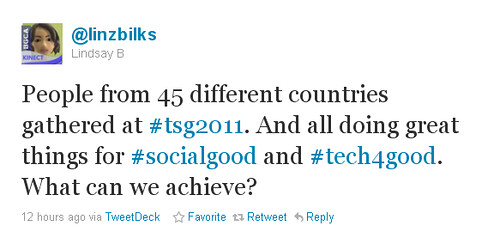
I spent today at day 1 of the TechSoup Global Summit in Mountain View with two hundred and forty people who work in the TechSoup Global Network around the world, plus other stakeholders. I’ve been involved with TechSoup/Netsquared Network since its inception back six years ago and so it is nice to be part of the narrative arc. This participatory event is offering two days of focused discussion about—how these networks, and the capabilities that power them, can be effectively leveraged to create greater impact.
A few months ago, I had an opportunity to hear Marnie Webb and Rebecca Masisak, CO-CEOs of TechSoup Global share their lessons learned in developing, weaving, and stewarding two very different types of networks. ( The presentation is here.) One topic they discussed the challenge of networked governance and leadership and mentioned that they’d be holding this convening to talk about to “smush” the two networks together and have the networks design the best governance structure.
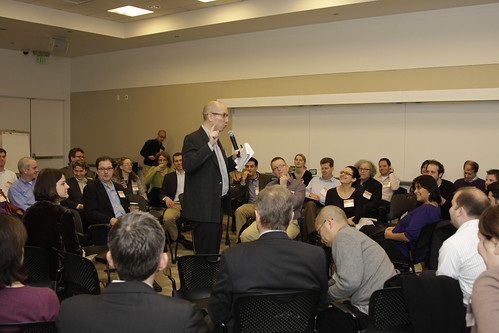
This convening is a stellar example of an approach to building networks, dubbed “holding the space.” It is a meeting designed to promote connections and discussions that lead to building a network. Alan Gunn was the moderator/host and the participatory design did not disappoint. Plus it is always a pleasure for me to observe “Gunner’s” facilitation techniques (I learn so much).
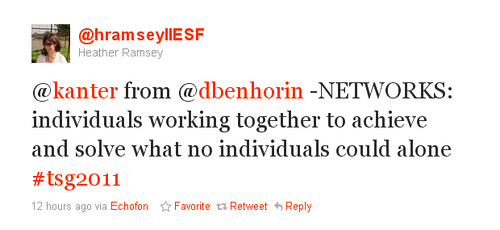
The started with some big picture frames. Gunner lay the ground rules for participating and encouraging people to connect with people they don’t already know. His welcome was followed by remarks from Akhtar Badshah who reminded us that technology disruption is our friend. Next, Daniel Ben-Horin gave us the context of the TSG Network and hopes for the future that would emerge from the conversations over the next few days.
I was invited to facilitate an opening plenary with three people who have lived inside successful networks for a couple of years to think big about the power of networks.
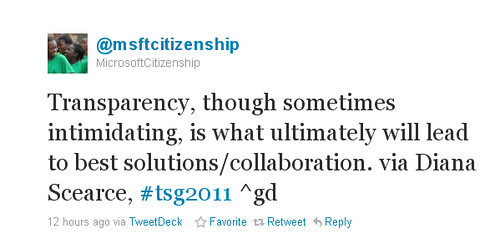
First up was Diana Scearce of Monitor Institute. I’ve had the pleasure of working with Diana as part of my work as Visiting Scholar at the Packard Foundation which has included the Network of Networked Funders. Diana shared some of her insights about networked leadership and keys for successful scaling.
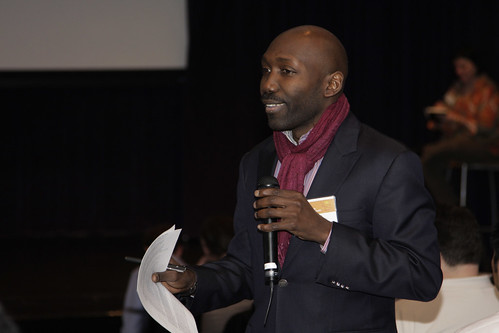
Next to speak was Johnny Celestin who created the Haitian Fund for Innovation and Reconstruction, a network with a goal to strengthen Haiti’s public and nonprofit sectors. The first thing he did on the stage was to say, “The first lesson in working with networks is that if someone already doing something well, let it go and do something different.” He then tore up the first page of his remarks, saying that a lot of what he was going to say was already said.
The next point he made was “Networks are about trust.” He then walked into the audience and asked people not to turn around to look at him, but listen to his voice. And the final point he made about networks was the importance of connections. He then called out people he wanted to connect with and how the connection was important to his network.
Annie Leonard, the director of The Story of Stuff Project, shared a rich story about they have built a global network of activists around the film. Akhtar Badshah captured the story in this blog post. Her final point was that working as a network is fun!
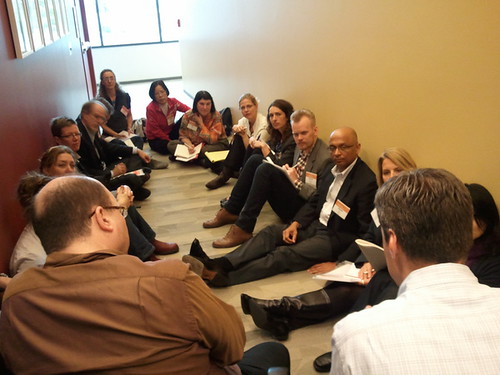
The rest of the day was spent in small group discussions framed around different issues. The photo was from a session to discuss strategies for avoiding “networked silos” and building networks of networks. I also participated in two other sessions, one about communities of practice moderated by Holly Ross, and one on philanthropy.
Beth Kanter is a consultant, author, influencer. virtual trainer & nonprofit innovator in digital transformation & workplace wellbeing.
